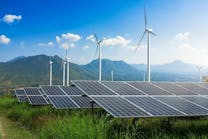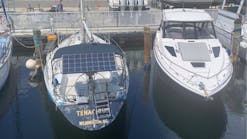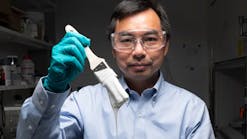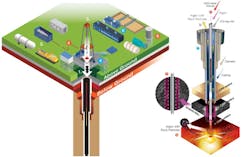Those of you who have been reading Clark’s Remarks for any length of time know that I like to feature emerging new technologies and the entities promoting them.
In February, Axios reported that Cambridge MA-based Quaise Energy had received $40 million in Series A funding. Along with a $5 million U.S. Dept. of Energy grant, the company has now received a total of $63 million in funding. Quaise is a 2018 Massachusetts Institute of Technology (MIT) spinoff that is developing new ways to access previously untapped geothermal energy.
According to the U.S. Energy Information Administration (EIA), geothermal energy is literally heat within the earth, coming from the Greek geo (earth) and therme (heat). Most scientists believe that this thermal energy within the Earth’s crust, that consists of solid rock forming the continents and ocean floors, is both remnant from the Earth’s formation and continuously renewed by slow radioactive decay.
The Earth’s inner core, approximately 1,500 miles in diameter, has a temperature of approximately 10,800 deg F, and the hottest part of the crust is approximately 7,230 deg F. Quaise’s approach to drilling holes deeper than have been previously practical is, according to its website, to first use conventional rotary drilling to get to basement rock. They will then switch to high-power millimeter waves, using their gyrotron drilling platform, to reach a depth of 12.5 miles or so, where the temperature is approximately 932 deg F. The gyrotron drill vaporizes boreholes through the rock by emitting electrons that are accelerated in a strong magnetic field.
Geothermal energy has, of course, been used by humans for thousands of years. Hot springs had been used for bathing at least since the Qin Dynasty in the 3rd century BC. And in the first century AD, the Romans began using the hot springs for both bathing and for underfloor heating. In the 15th century, France began operating a geothermal district heating system and in 1892, the first one in the U.S. opened in Boise, ID. Since then, geothermal energy has expanded to include electric power generation in dry steam, flash steam, and binary cycle power plants. However, according to Think GeoEnergy - Geothermal Energy News, the U.S. had only 3.68 gigawatts (GW) of geothermal capacity in 2019, when the country’s total electric energy consumption was 3,955 terawatt hours (billion kWh). In other words, just 0.00009 percent!
In addition to being a truly renewable source of energy, Quaise points out that geothermal is also more sustainable than other renewables, since “deep geothermal uses less than one percent of the land and materials of other renewables.” The company also claims it is both infrastructure- and workforce-ready, since drilling rigs and fossil fuel power plants can all be readily repurposed for geothermal, using the largest workforce in energy today, the oil and gas industry workers, whose skills are readily transferable.
And finally, at a time when energy costs are soaring due at least in part to geopolitics, geothermal does not require any fuel, nor does it produce any waste. It is a “truly equitable clean energy source, abundantly available near every population and industrial center on the planet.”
A regular contributor to HPAC Engineering and a member of its editorial advisory board, the author is a principal at Sustainable Performance Solutions LLC, a south Florida-based engineering firm focusing on energy and sustainability. He can be reached at [email protected].










